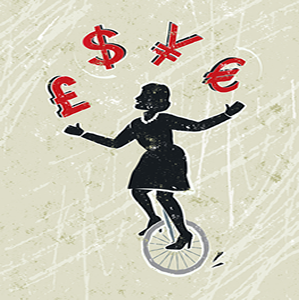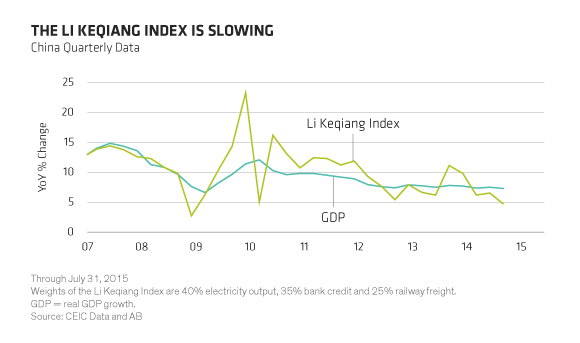The Effects of FX!
by Jason Voss, CFA Institute
 Ronald G. Layard-Liesching has a storied background in finance as co-founder of Pareto Partners, a well-known quantitative finance shop where he served as chief research officer, and currently as chairman of Mountain Pacific Group, which advises clients on risk management as well as foreign exchange (FX) using quantitative techniques.
Ronald G. Layard-Liesching has a storied background in finance as co-founder of Pareto Partners, a well-known quantitative finance shop where he served as chief research officer, and currently as chairman of Mountain Pacific Group, which advises clients on risk management as well as foreign exchange (FX) using quantitative techniques.
Liesching outlined a startling and complex thesis at the recent 2015 CFA Institute Fixed-Income Management Conference in Boston.
Here is his theory, in summary form:
- Quantitative easing (QE) caused risk to be mispriced in all markets globally. For the big pension fund investors worldwide, this means that their target rates of return are completely unachievable.
- Currency market structure changed markedly and now includes huge new emerging market players. What this means is that foreign exchange markets are now driving all other markets.
- In dollar terms, the fall of commodities prices has a large currency effect. Especially impacted by this fall are emerging market and developing economies that now constitute 55% of global growth.
- Dodd-Frank, the Volcker Rule, Basel III, and regulatory lawsuits are disrupting capital flows and markets. Consequently, regulation is seriously impairing the proper functioning of markets.
- Liquidity in bond funds and exchange-traded funds (ETFs) is illusory. Combined with the other four trends, this leaves the world vulnerable to a catastrophic 2008-like event for which central banks have few tools to address.
What follows are data highlights in support of Liesching’s thesis:
QE Effects
QE has driven down yields on bonds to such an extent that pension investors, and others with beneficiaries and their mandated liabilities, must make up the shortfall through other means. The classic mix is around 70% equities and 30% bonds, with this combination assumed to deliver 8% per year in returns. On average bonds right now can be counted on to deliver around 2.2%. So at a 30% weighting, bonds are contributing 0.66%. This means that equities must be counted on to consistently deliver around 10.5% (10.5% x 70% = 7.35%) to get to that 8% required rate of return. For those who know market history, this is a near impossibility since US equities long run returns are around 6%. A thinking analyst might point out that you could just lower the expected rate of return to be more realistic. Unfortunately, pension funds must be able to make their liability payments, meaning that contributions levels for pensioners would have to be massively increased, a scenario for which there is little political appetite. Ouch!
FX Market Structure
Liesching contends that starting around 2007, FX market structure began to radically change. Specifically, much of the trading is now electronic with hedge funds engaged permanently and in size. Additionally, there are now many emerging market investors who are flush with new savings to invest and many of them are looking overseas. Here Liesching highlighted public funds, sovereign wealth funds, and ultra high-net-worth individuals. Many of these investors, he believes, have little to no interest in hedging their exposures back to their home currencies. What all of this means in combination is that daily currency trading volumes denominated in dollars are now over 140 times the size of the dollar value of New York Stock Exchange volumes! In other words, currency markets and their flows are driving all of the other markets.
Currencies and Commodities
Back in the day, circa 2005, the United States was the largest buyer of global commodities. Therefore, commodity prices were not just quoted in US dollars (an artifact of the immediate post-World War II era), they were also determined by US demand and — by natural extension — the US dollar. So when the dollar rose, the price of commodities, measured in dollars, only went down by a small amount. But fast forward to the current day, and the largest buyers of commodities are emerging markets. Commodity prices are still quoted in US dollars, but the price is not determined by US demand. Consequently, when the US dollar goes up in value, then the price of commodities will fall . . . a lot. Since these emerging economies constitute 55% of global economic growth, FX volatility can severely hamper not just EM growth, but global growth, too.
Regulatory Bloat and Low Liquidity
Liesching, along with others at the Fixed Income Management Conference, said that new regulations are impairing market functioning. One such example is that new capital ratios mean that broker-dealers are increasingly keeping very lean inventories of securities on their balance sheets. In years past, well-stocked inventories allowed them to serve as market makers and to complete trades on behalf of their clients. But now, with lean inventories, there is very low liquidity in these markets. Now buyers and sellers literally must find one another. Clearly this impairs market functioning. Couple this lack of liquidity, on one side, with a massive new issuance of debt (since rates are soooooo low), on the other side, and you have a prescription for disaster. Furthermore, many trades are now fulfilled by market-making algorithms run by hedge funds. The good news in this scenario is that pricing is likely more efficient. But the bad news — as in, the very bad news — is in abnormal markets, when the algorithm exceeds its short-run value-at-risk (VAR) limits, then the algorithm instantly stops making markets.
Bad Recipe = Bad Outcome
All of the above, according to Liesching, means that there is an important scenario that is unpriced by most investors: a colossal flash crash. Liesching emphasized that this is not a forecast, it is a scenario. Count yourself informed.
If you liked this post, don’t forget to subscribe to the Enterprising Investor.
All posts are the opinion of the author. As such, they should not be construed as investment advice, nor do the opinions expressed necessarily reflect the views of CFA Institute or the author’s employer.
Image credit: ©iStockphoto.com/Meriel Jane Waissman
This post originally appeared on the CFA Institute's Enterprising Investor blog.
Copyright © CFA Institute














